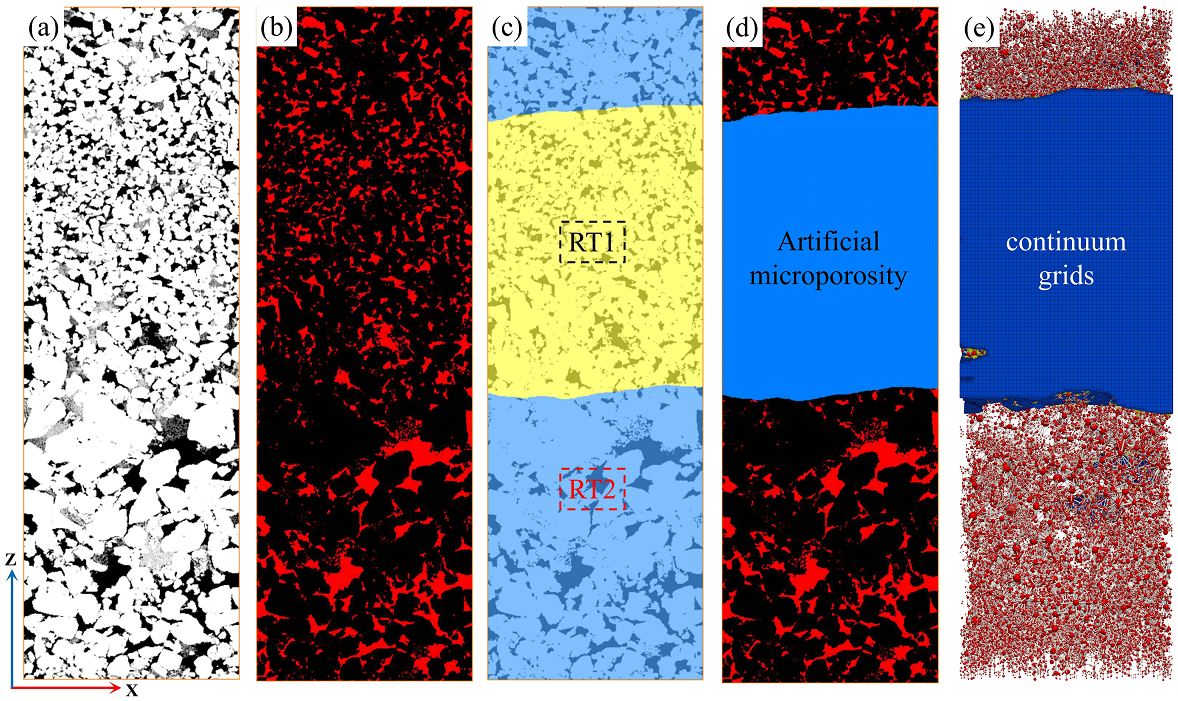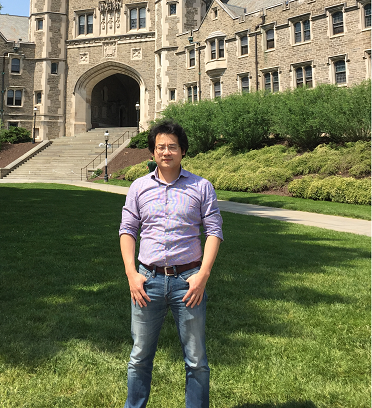The pore-network-continuum modeling of two-phase flow properties for multiscale digital rocks
孔隙网络-连续介质模拟多尺度数字岩心两相渗流参数研究
Published in Advances in Water Resources, 2025
Many subsurface formations and reservoirs exhibit multiscale and heterogeneous pore structures, such as soils, carbonate rocks, shales and tight sandstones. Understanding and predicting their two-phase flow properties are crucial to underground applications including contamination remediation, oil and gas recovery, and geological storage of carbon dioxide. For a multiscale digital rock, pores with a wide pore-size distribution spanning several orders of magnitude cannot be visualized in one image, due to the trade-off between image resolution and field of view. However, a large number of unresolved pores (i.e. microporosity) can challenge the modeling of flow and transport. We develop an efficient pore-network-continuum model (PNCM) for quasi-static two-phase flow in multiscale digital rocks. The resolved pores and microporosity are represented by a pore network and continuum grids, respectively. Instead of costly CT-based characterization, we propose to use the bimodal van Genuchten model of mercury intrusion capillary pressure to infer the pore-size distribution of heterogeneous microporosity. The PNCM is applied to a laminated sandstone with synthesized homogeneous microporosity and an Estaillades carbonate rock with heterogeneous microporosity. Both single-phase and two-phase flow properties including absolute permeability, formation factor, resistivity index, capillary pressure, and relative permeability are predicted and compared with experimental data. The good agreement demonstrates the robustness and reliability of the developed PNCM. Using the case studies, we illustrate how microporosity influences and determines two-phase flow properties.

Recommended citation: Bowen Shi, Jianqi Rong, Han Jiang, Bo Guo, S. Majid Hassanizadeh, Chao-Zhong Qin, The pore-network-continuum modeling of two-phase flow properties for multiscale digital rocks, Advances in Water Resources, 2025, 105138, https://doi.org/10.1016/j.advwatres.2025.105138.
Download Paper
